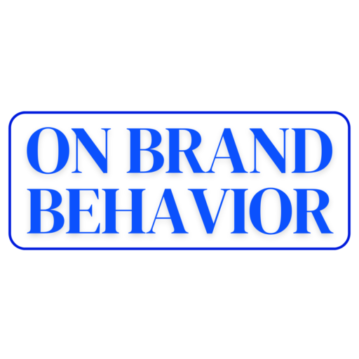What makes certain brands feel instantly trustworthy, while others struggle to gain traction—no matter how much they market themselves? Why do people swear by Apple, Nike, or Tesla, even when competitors offer similar or even better products?
The answer isn’t about logos, colors, or marketing spend—it’s about psychology. Brand trust is built in the mind, not just in the marketplace. Let’s break down the science of why people trust some brands over others and how you can apply these principles to your business.
Trust is Not Given—It’s Earned (and Reinforced Repeatedly)
Brand trust isn’t built overnight. It’s the result of consistent signals, behavioral reinforcement, and perceived reliability over time. People trust brands the same way they trust people—by observing their actions, assessing their consistency, and determining how well they align with expectations.
Think about it: Would you trust a stranger who suddenly shows up and promises you the best deal ever? Probably not. But if that same person were introduced by a trusted friend, or if you had seen them consistently deliver on their promises, your skepticism would drop significantly.
Brands work the same way. The more a company delivers on expectations, stays consistent, and proves reliability, the stronger its trust becomes.
Case Study: Amazon’s Predictable Reliability
Amazon wasn’t always the giant of eCommerce—but what made it dominate? Predictability.
• When people order from Amazon, they know what to expect: fast shipping, easy returns, and accurate product descriptions.
• If there’s an issue, Amazon’s customer support and refund policies make people feel safe buying.
• Over time, that consistency eliminates friction—people don’t even think twice before ordering from Amazon.
Now, compare this to a random website selling the same product at a lower price. Even if the deal is better, would you trust it? Most people wouldn’t, because the brand trust hasn’t been established.
🚀 Takeaway: If you want people to trust your brand, they need to experience consistency, reliability, and low risk—over and over again.
The Three Psychological Triggers of Brand Trust
To make people trust your brand, you need to activate the same psychological mechanisms that drive human trust in relationships.
1. Familiarity: The Exposure Effect
The more people see something, the more they trust it. This is called the Mere Exposure Effect—our brains instinctively trust what feels familiar.
✅ This is why Coca-Cola, McDonald’s, and Apple spend millions ensuring their brands are everywhere—not because you don’t know them, but because repetition builds comfort and subconscious trust.
🔹 How to Apply This:
• Stay visible: Consistently show up where your audience is (social media, search results, communities).
• Repetition matters: People need to see your brand multiple times before trust kicks in.
• Use strategic brand associations: If an authority figure endorses you, trust transfers over.
Example: Why do people instantly trust a new book on “The New York Times Best Sellers” list? Because the brand (NYT) has already built trust, and that credibility transfers to the book.
2. Proof: The Trust Stack (Social, Expert, Personal)
People trust brands based on who else trusts them. The more signals they get that others believe in you, the safer they feel.
✅ There are three levels of trust-building proof:
1️⃣ Social Proof (Mass Validation):
• Customer reviews, testimonials, and case studies.
• Large followings or high engagement on social media.
• Logos of companies you’ve worked with.
2️⃣ Expert Proof (Authority Validation):
• Press features (Forbes, Inc., Business Insider).
• Influencer endorsements or industry expert recommendations.
• Certifications, awards, or exclusive memberships.
3️⃣ Personal Proof (Direct Experience):
• A smooth, reliable experience when someone interacts with your brand.
• Clear, honest communication that matches expectations.
• A low-risk way to “try” your brand before committing (free trial, sample, refund policy).
Example: Why do people trust Tesla more than a new electric car startup?
• Social Proof → Millions of Tesla drivers love the product.
• Expert Proof → Industry leaders recognize Tesla as a pioneer.
• Personal Proof → Those who test drive a Tesla often become customers.
🚀 Takeaway: If you want people to trust your brand, you need a stacked mix of social, expert, and personal proof.
3. Transparency: The Trust Shortcut
When a brand is open, clear, and honest, it builds instant credibility.
• People trust brands that admit mistakes over ones that try to cover things up.
• They respect companies that explain their process, pricing, or challenges.
• Transparency makes brands feel human, relatable, and safe to engage with.
Example: When Domino’s Pizza admitted that their pizza used to be bad and they showed the improvements they made, their sales skyrocketed.
• Instead of hiding bad reviews, they owned the criticism, improved their recipe, and gained customer trust.
🔹 How to Apply This:
• Be clear and honest about what you offer (no overpromising).
• If there’s an issue, address it directly instead of ignoring it.
• Share behind-the-scenes insights to make your brand feel human and relatable.
🚀 Takeaway: People trust transparency because it feels real, safe, and reliable—even when the news isn’t perfect.
Final Thoughts: Trust is the Ultimate Brand Currency
If your audience doesn’t trust you, they won’t buy from you. No amount of marketing can fix a trust gap.
To build lasting brand trust, focus on:
✅ Familiarity: Be visible and show up consistently.
✅ Proof: Stack social, expert, and personal validation.
✅ Transparency: Be open, clear, and honest.
The brands that master psychological trust triggers don’t just attract customers—they create loyal fans who never question their decision to buy.
What’s Next?
If you want to learn how to apply branding psychology to build influence, trust, and engagement, check out On Brand Behavior’s resources for actionable strategies.
Would your brand pass the trust test? What’s one trust-building strategy you can implement today? Let’s discuss in the comments!
